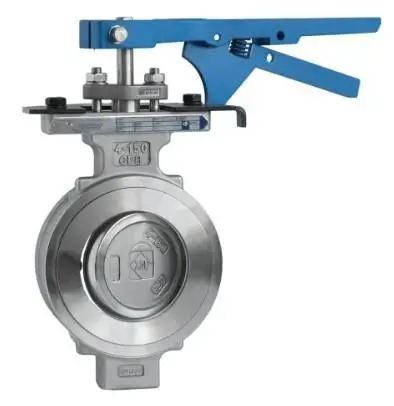Double offset butterfly valve is widely used in water supply, circulating water of electricity, petroleum, chemical engineering, etc. The common nominal diameter ranges from DN100mm to DN2000mm. The nominal pressure is 0.6MPa~1.6Mpa. In general, double offset butterfly valve is used as regulation or throttle equipments. High strength gray iron and nodular cast iron are used as raw materials. Double offset can separate disc from seat after valves being opened, eliminating over compression and scraping between disc and seat, reducing torque and abrasion, improving service life of seat. During actual processing and using process, cast iron has defects of loose organization and pores, which may result in micro-speeage or leakage. The valves may be scrap without saving.
Aiming at the defects on cast iron, one of the most reliable repairing methods is infiltration which is a micropore osmotic sealing process. The sealing media penetrate into micropore and fill up it through natural permeability, evacuation and inflating. The sealing media inside micropore are solidified to seal the micropore, though cooling or heating. After infiltration, boundary dimensions and materials properties of parts cannot be changed and the acid and alkali resistance have highly been improved.
Types of infiltrants used to repair butterfly valve
Inorganic infiltrants
The main ingredient of infiltrants is inorganic sodium silicate, added with various inorganic metallic salts, stabilizers, surfactants and packing. Inorganic infiltrants show colloid or suspension. The infiltrants have storage stability, long expiration date and convenient usage. The valves have acid and alkali resistance and high temperature resistance, after being infiltrated by using inorganic infiltrants. The infiltrants are suitable for micropore whose diameter ranges from 0.15mm to 0.5mm and the parts which are used under temperature of 250℃~300℃ for a long time.
Organic infiltrants
Organic infiltrants in common use are methacrylic acid. At present, the second or third generation organic infiltrants having been widely used are Impretech YJ-85C. It does not need catalysts, abluents, curing agents. It becomes a kind of thermosetting plastics after being solidified. The plastic will not be melted or liquefied and discharge from parts when temperature rising. Organic infiltrants has the advantages of high impregnation rate, high efficiency, non-shrink, tough solidification, aging resistance, acid or alkali resistance, steady characteristics, non-pollution. It should be focused to prevent organic infiltrants from losing efficacy due to high temperature. Usage temperature ranges from -50℃ to 200℃. Organic infiltrants are suitable for mircopore whose diameter is less than 0.3mm.
